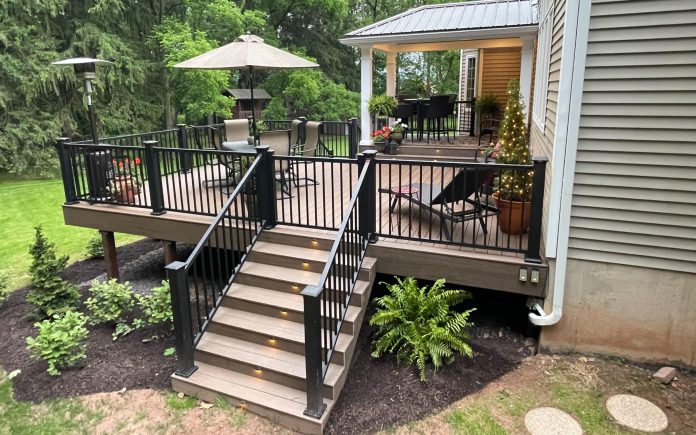Designing your dream deck is an exciting endeavor that allows you to create an outdoor space tailored to your lifestyle and preferences. Whether you envision a cozy retreat for relaxation or an expansive entertaining area for gatherings, careful planning is essential to bring your vision to life. Follow this step-by-step guide to navigate the design process and create a deck that meets your needs and exceeds your expectations:
1. Define Your Goals and Priorities:
Before diving into the design details, take some time to consider how you intend to use your deck. Are you primarily looking for a space to relax and unwind, or do you plan to host frequent gatherings and events? Make a list of your must-have features and prioritize them based on importance.
2. Assess Your Space and Site Conditions:
Evaluate the available space for your deck, taking into account factors such as the size and shape of your yard, existing landscaping features, and any potential obstacles or limitations. Consider the orientation of your home, prevailing winds, sun exposure, and privacy concerns when determining the optimal location for your deck.
3. Determine Your Deck Size and Layout:
Based on your goals and site conditions, determine the size and layout of your deck. Consider factors such as traffic flow, seating areas, dining space, and any additional features you wish to incorporate, such as built-in benches, planters, or storage.
4. Choose Your Decking Material:
Selecting the right decking material is crucial for both aesthetics and performance. Options range from traditional wood species like cedar, redwood, and pressure-treated lumber to low-maintenance alternatives such as composite decking and PVC decking. Consider factors such as durability, maintenance requirements, color options, and cost when choosing the best material for your deck.
5. Design Your Deck Structure:
Design the structural framework of your deck, including the support posts, beams, and joists. Ensure that your design complies with local building codes and regulations, particularly regarding load-bearing capacity, footings, and attachment methods. Consider hiring a structural engineer or consulting with a professional deck builder to ensure your design is safe and structurally sound.
6. Incorporate Functional and Aesthetic Features:
Enhance your deck’s functionality and visual appeal by incorporating functional and aesthetic features such as railings, lighting, built-in seating, pergolas, and outdoor kitchens. Pay attention to details such as materials, finishes, and design elements that complement your home’s architecture and surrounding landscape.
7. Consider Safety and Accessibility:
Prioritize safety and accessibility when designing your deck, especially if you have young children, elderly family members, or individuals with mobility challenges. Install proper railings, gates, and non-slip surfaces to prevent accidents, and ensure that your deck layout allows for easy navigation and movement.
8. Create a Budget and Timeline:
Establish a realistic budget for your deck project, taking into account material costs, labor expenses, permits, and any additional fees or contingencies. Create a timeline outlining the various stages of the design and construction process, from initial planning and permitting to material procurement and installation.
9. Review and Revise Your Design:
Once you’ve completed your initial design, take the time to review and revise it as needed. Consider feedback from family members, friends, or design professionals, and make adjustments to ensure that your deck design meets your needs and reflects your personal style.
10. Obtain Necessary Permits and Approvals:
Before starting construction, obtain any necessary permits and approvals from your local building department or homeowner’s association. Ensure that your deck design complies with all applicable regulations and zoning requirements to avoid delays or complications during the construction process.
By following these steps and investing time and effort into the design process, you can create a deck that enhances your outdoor living experience and adds value to your home for years to come. With careful planning and attention to detail, you can turn your dream deck into a reality that you’ll enjoy and cherish for many seasons ahead.







